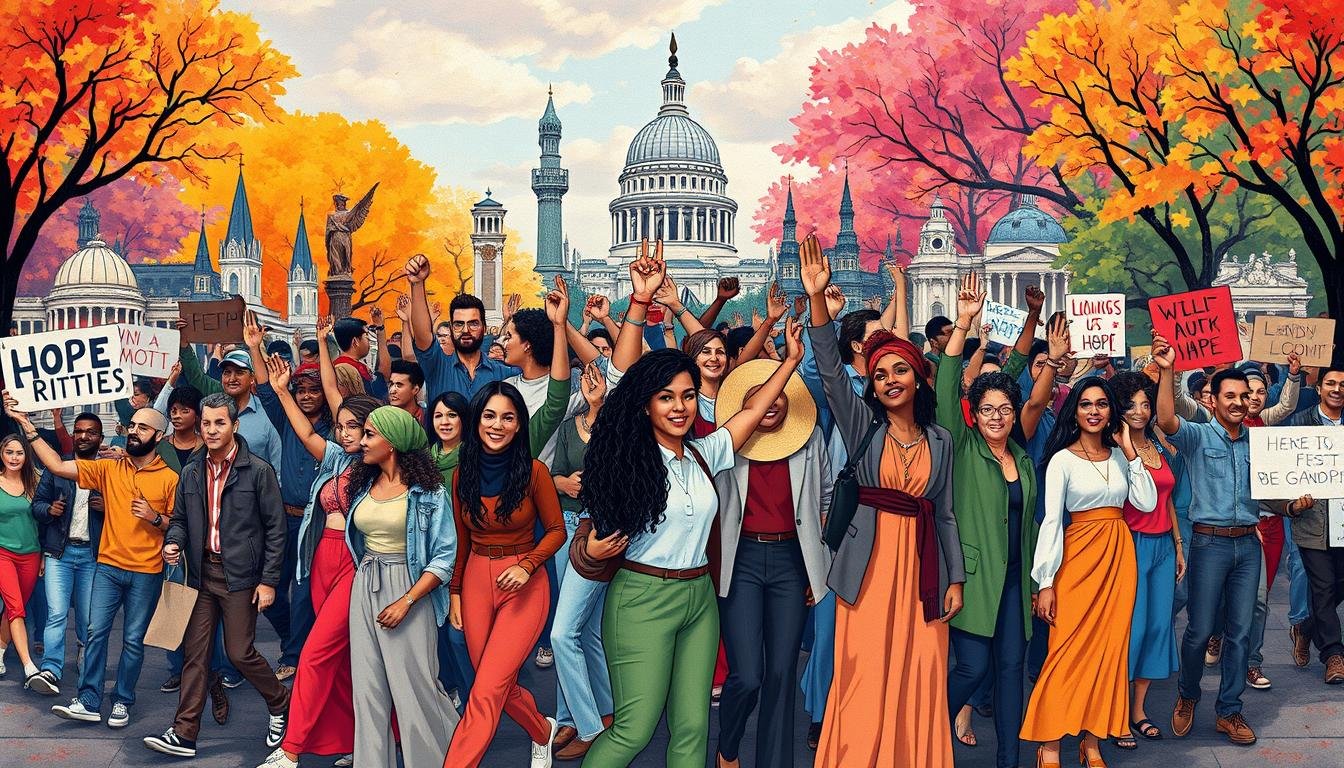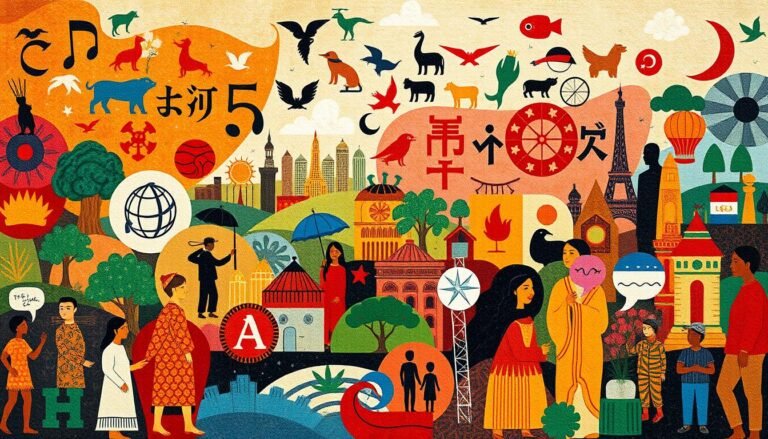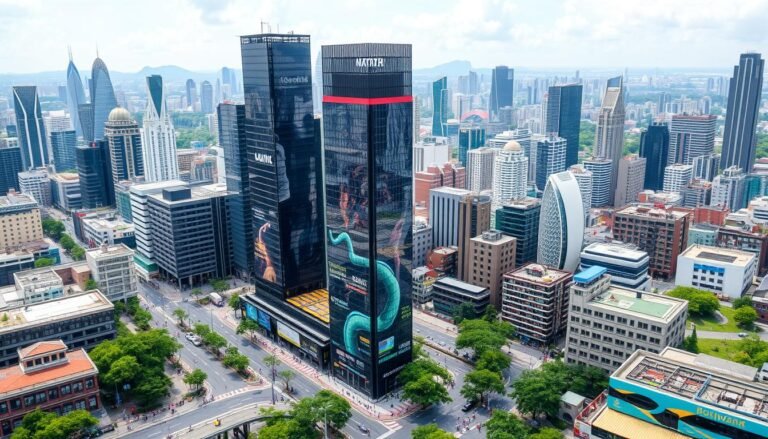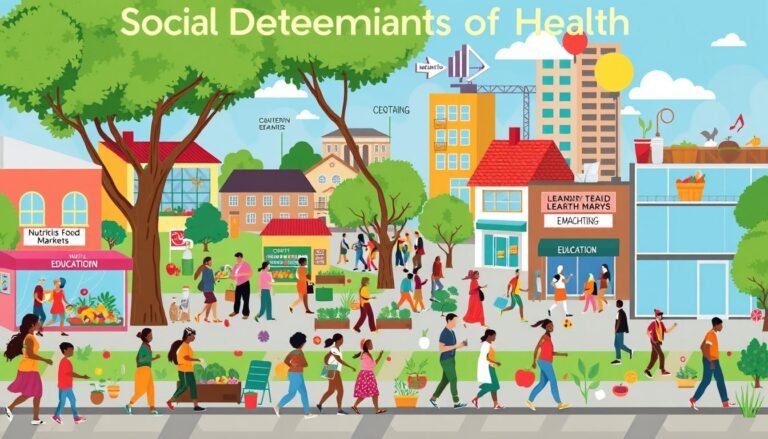Understanding the Role of Social Movements in History
Have you ever thought about how regular folks can change history? Social movements have led to big changes in our world, like civil rights and protecting the environment. But what’s behind their strength?
Social movements are more than just protests or rallies. They’re planned efforts by groups to reach certain goals. These goals often aim at making social or political changes. These efforts have changed our society a lot, from the US civil rights movement to the recent global climate strikes.
The effect of social movements on history is clear. They’ve given a voice to the silenced, challenged those in power, and led to big reforms. From women’s right to vote to anti-war protests, these movements have pushed for progress for over two hundred years.
But what makes a social movement successful? It’s not just about how many people join. Successful movements need strong leaders, clear goals, and the power to get people moving. They also use social networks and social media to spread their message and plan actions.
Key Takeaways
- Social movements are organized efforts to achieve specific social or political goals
- They have played a crucial role in shaping history and society
- Successful movements need strong leadership and clear objectives
- Social networks and media play a vital role in modern movements
- Movements can occur at global, national, and local levels
- Development institutions can support social movements by empowering local stakeholders
Defining Social Movements
Social movements are ongoing efforts that push for change through group action. They work to make or stop changes in society. They believe in the strength of coming together to change our world.
Characteristics of Social Movements
Social movements mix planning with spontaneity to keep people involved and united. They are groups where people are unhappy with things as they are and dream of a better future. Everyone shares common values and rules that guide their actions.
Types of Social Movements
Social movements vary in their goals and the big changes they want:
- Reform movements: Want to make small changes in the current system
- Revolutionary movements: Want to completely change the government and life style
- Reactionary movements: Try to stop or reverse social changes
- Self-help movements: Focus on improving oneself
- Religious movements: Strengthen beliefs and gain new followers
Differences from Special Interest Groups
Social movements usually don’t fit into the usual systems. They use protests and demonstrations to speak out and push for change. This makes them different from groups that work within the political system.
| Aspect | Social Movements | Special Interest Groups |
|---|---|---|
| Duration | Long-lasting (weeks to years) | Can be short-term or ongoing |
| Methods | Protests, demonstrations | Lobbying, political influence |
| Goals | Broad social change | Specific policy outcomes |
| Membership | Open, grassroots | Often selective or industry-based |
The Historical Context of Social Movements
Social movements have been around for centuries, shaping our societies. They started to grow in the mid-18th century in England. Back then, people used public meetings, demonstrations, and pamphlets to speak out together.
The Gordon Riots of 1780 were a key moment. They showed how powerful group action could be. Since then, social movements have grown and spread all over the world.
Things like education, industrialization, and more people moving around helped bring about modern social movements. These changes made it easier for people to come together and act as a group. Labor unions fought for workers’ rights, women wanted the right to vote, and anti-colonial movements challenged the powers that ruled over many lands.
“Over the past 200 years, social movements have become a popular and global expression of dissent.”
In the 19th century, activism really took off. More people living in cities meant they could share ideas and work together. With more freedom to speak their minds and some economic freedom, people started many new movements.
| Era | Key Movements | Impact |
|---|---|---|
| 18th Century | John Wilkes Movement | Catalyzed mass social action |
| 19th Century | Labor Unions, Women’s Suffrage | Workers’ rights, Voting equality |
| 20th Century | Civil Rights, Anti-colonial Struggles | Social equality, Independence |
Now, social movements use technology and the internet to reach people everywhere. They keep finding new ways to communicate and grow. Looking back, we see how powerful these movements are at bringing about change.
Key Elements of Successful Social Movements
Social movements change history by bringing people together to act as one. They have key parts that help them succeed in changing societies.
Collective Identity
A strong sense of shared identity brings people together in social movements. This shared purpose creates a strong bond. People come together because of their common experiences, values, and goals.
Shared Goals and Values
Successful movements have clear goals that match the values of its members. These goals also connect with people in society. For instance, the civil rights movement’s goal of racial equality was something many Americans supported.
Organizational Structure
Good social movements need a strong structure. This structure helps plan activities, manage resources, and keep focus on goals. The structure can be simple or complex, depending on the movement’s size and nature.
Leadership and Mobilization
Strong leaders are key to leading a movement. They inspire, plan, and get people involved. They create messages that appeal to everyone. Good leaders also change their strategies as needed to keep the movement going strong.
“The most important insight from social movement research over the past 40 years is that movements are not spontaneous occurrences but rather emerge from the efforts of dedicated activists.”
By using these elements well, social movements can challenge the current state and bring about big changes in society.
Understanding the Role of Social Movements in History
Social movements have changed our world in big ways. They’ve pushed for major changes in society and politics. From fighting for civil rights to protecting the environment, these movements have made a big impact.
Throughout history, social movements have started because of big issues in society. The Arab Spring in 2011 is a great example. It started with protests in Egypt against President Hosni Mubarak and spread across the Middle East. This showed how social movements can lead to big changes in politics.
Social movements have different goals and ways of working. Some aim for slow changes, while others want big, fast changes. The table below shows different types of movements and what they aim for:
| Movement Type | Examples | Objectives |
|---|---|---|
| Evolutionary | Christian Conservatism, Tea Party | Gradual societal changes |
| Revolutionary | Black Lives Matter, Anti-War | Radical system overhauls |
| Environmental | PETA, Anti-globalization | Ecological protection |
These movements do more than just reach their goals. They often lead to new laws, like after the 2010 BP oil spill. This event made people worry about the environment, leading to new rules on offshore drilling. This shows how social movements can bring about lasting changes in politics.
Impact of Social Movements on Political Systems
Social movements have changed politics, pushing for policy changes and increasing people’s involvement. They start small but can grow big, affecting many. They help shape public talks, making politicians and citizens think and talk more.
In democracies, social movements give power to the people. The Green Movement in Iran wanted fair votes after the 2009 election. In Mexico, the Zapatistas fought for the rights of indigenous people due to NAFTA’s effects. Groups in Nigeria, like MEND and MOSOP, stood up for ethnic minorities and against oil extraction.
These movements change political systems in many ways:
- They bring about change without needing formal groups
- They gain support from many people
- They build strong connections among followers
- They influence public talks and political debates
- They’re tough to stop because they’re not centralized
Social movements are key to building modern democracies. They’ve fought for rights based on many factors like property, gender, race, and religion. Now, they work to change political systems and cultural views on big social issues.
“Social movements are crucial for a vibrant democracy, emphasizing citizens as the primary source of power.”
Social movements bring up big questions, making democracy and democratization important worldwide.
Notable Social Movements Throughout History
Social movements have shaped societies for centuries. They have fought for equality, rights, and justice. These efforts have led to significant changes. Let’s look at some of the most impactful movements in history.
Civil Rights Movements
The fight for equal rights is key in many social movements. In the United States, the Civil Rights Movement grew a lot. The National Association for the Advancement of Colored People grew from one branch to over 1,000 during World War II.
Recently, the Black Lives Matter movement started in 2013. It highlights the ongoing fight for racial equality.
Women’s Suffrage
Women’s fight for the right to vote was a big step in history. This movement helped push for more women’s rights. In 2017, the #MeToo movement became popular, focusing on sexual harassment and assault.
These efforts are still shaping the conversation on gender equality around the world.
Labor Unions
Labor movements have fought for workers’ rights for a long time. The Industrial Workers of the World was involved in over 2,800 strikes and campaigns from 1905 to 1920. The United Farm Workers also had more than 1,000 strike actions from 1965 to 1975.
These actions highlight the ongoing fight for fair labor practices.
Environmental Activism
Environmental movements have become more important in recent years. The Schools Strike movement, led by Greta Thunberg, saw about 6 million people protest for the climate in September 2019. This shows how young people are concerned about the environment.
| Movement | Key Achievement | Year |
|---|---|---|
| LGBTQ+ Rights | Marriage Equality in Australia | 2017 |
| Indigenous Rights | Yirrkala Bark Petitions in Australia | 1963 |
| Women’s Rights | Overturning Driving Ban in Saudi Arabia | 2018 |
These movements show how powerful it is when people come together. From fighting for human rights to LGBTQ+ and indigenous rights, they keep changing our world. They prove that when voices unite, they can make a big difference.
The Evolution of Social Movements in the Digital Age
Social movements have changed a lot in the digital era. Social media has changed how people organize and push for change. Now, activists can reach people all over the world instantly, making their messages spread much farther than before.
The Arab uprisings of 2011 showed how big a role digital mobilization can play. Social media helped activists work together, spread their message, and connect people across the Middle East and North Africa. This digital change was built on a history of using tech for social change in the region.
Now, digital and traditional media work together in a complex way. Social media helps new movements start, but it also shows their weaknesses. These movements often find it hard to keep going after the first big actions, lacking the structure for lasting change.
| Advantages of Digital Movements | Challenges Faced |
|---|---|
| Rapid mobilization | Sustaining momentum |
| Global reach | Building organizational depth |
| Instant communication | Overcoming slacktivism |
| Low-cost organization | Government opposition |
Some worry about “slacktivism,” where people just show support but don’t really take action. To fix this, movements need to work on building real commitment and skills for lasting growth. The future of social movements is in using digital tools to help with long-term involvement and building strong organizations.
Challenges Faced by Social Movements
Social movements face many obstacles on their journey to bring about change. They must deal with strong opposition and internal conflicts. These hurdles make it hard to reach their goals.
Opposition from Authorities
Those in power often use tactics to suppress movements. They see social movements as threats. This leads to crackdowns, arrests, and violence. Such actions make it hard for activists to meet and share their message.
Internal Conflicts
Disagreements within a movement can be as harmful as outside opposition. Issues like leadership, strategies, and goals can cause groups to split. This makes it tough to mobilize resources when members disagree.
Sustaining Momentum
Keeping a movement going for the long term is hard. Activist burnout is a big concern as interest fades and progress is slow. The Movement Action Plan (MAP) shows the eight stages movements go through. It highlights the challenges activists face.
“Social movements must adapt to changing contexts and overcome psychological barriers to maintain their drive for change.” – Bill Moyer, developer of MAP
Even with these challenges, many movements keep going. By understanding these obstacles, activists can plan better for success in their fight for social change.
Global Perspective: Social Movements Across Cultures
Social movements change our world in unique ways across different cultures. They address issues like poverty, discrimination, and protecting the environment. The rise of transnational activism has led to a global justice movement, tackling concerns that cross borders.
Cultural differences shape how these movements form and act. In Europe, peace and ecological movements have shaped politics for decades. Latin American trade unions support left-leaning governments. In Africa, India, and Southeast Asia, social movements have created strong communities and influenced politics.
The Fair Trade movement and OXFAM show how local issues can become global campaigns. These groups prove that people from different cultures can unite for change. Historians now study social movements in a broader context, looking at their impact on society over time.
Studying social movements across cultures reveals their role in building civil society and stable democracies. This global perspective shows how local actions can lead to worldwide changes. It’s clear that social movements, whether local or global, are crucial in shaping our future.
Source Links
- Social Movements | UNICEF SBC GUIDANCE
- 21.3 Social Movements
- The Four Roles of Social Activism by Bill Moyer
- Social movement | Definition, Types, Theories, & Facts
- Social Movements
- Social movement
- History of Social Movements
- 21.2 Social Movements – Introduction to Sociology 3e | OpenStax
- Types and Stages of Social Movements
- Lessons from Social Movements – Supporting a Movement for Health and Health Equity
- Chapter 21. Social Movements and Social Change
- Social Movements and U.S. Political Parties: Evolutionary and Revolutionary Change
- The Shaping of Politics Through Social Movements
- Impact of Social Movement and Interest Groups on Governments – AP Comp Gov Study Guide 2024 | Fiveable
- Social Movements in Global Politics
- 9 powerful social change movements you need to know about
- Mapping American Social Movements Project
- Social movements in the digital age (Chapter 2) – Information Politics, Protests, and Human Rights in the Digital Age
- Social Media and Social Movements: An Evolving Relationship
- Surviving the Ups and Downs of Social Movements
- Social Movements and Development
- The History of Social Movements – A Global Perspective
- Social Movements in Global Perspective







